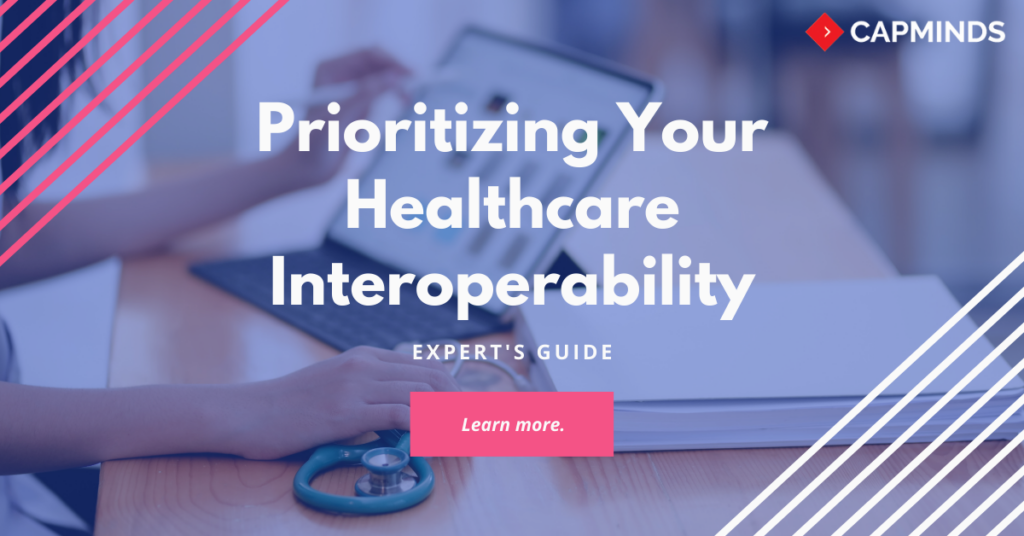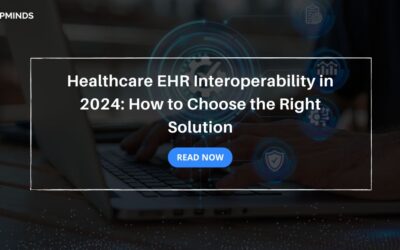Prioritizing Your Healthcare Interoperability : Expert’s Guide
In today’s healthcare industry the ability to share patient health information through different channels has gained great importance. To do so, healthcare interoperability is one of the most underutilized concepts nowadays. As the healthcare industry is becoming more complex each day, providers are started looking for the best management system to make the work faster and easier. So here interoperability can help in adding extra special value to healthcare. It benefits both the patient and also the healthcare providers with better results. In this article, we have explained the interoperability challenges and its importance to increase productivity.
What is Interoperability in healthcare?
Interoperability in healthcare is the process of
gathering patient health data from various databases and presenting it to the
healthcare provider to exchange, interpret, and use data cohesively.
According to the Healthcare Information and Management
Systems Society (HIMSS), “Interoperability describes the extent to which
systems and devices can exchange data, and interpret that shared data. For two
systems to be interoperable, they must be able to exchange data and
subsequently present that data such that it can be understood by a user.”
According to MarketsAndMarkets, the global market of healthcare interoperability solutions is expected to jump to $4.2 billion in 2024 from $2.3 billion in 2019, rising at a CAGR of 12.6%.
Four Levels of Healthcare Interoperability
Foundational interoperability: This level allows one information system to receive data from another. It does not require any receiving information system to interpret the exchanged data without user intervention.
Structural interoperability: This level defines the structure (syntax) or format for data exchange. This level of interoperability ensures that data exchanges between healthcare IT systems can be interpreted at the data field level. Hence this level is considered to be a more complex one.
Semantic interoperability: The purpose of this step is to create a perfect machine-to-machine data transfer channel that is reliable and accurate. This level supports the electronic exchange of patient information between authorized parties via potentially disconnected electronic health record (EHR) systems and other systems to improve the quality, safety, efficiency, and efficacy of healthcare delivery. Here the information systems can exchange and fully interpret received data.
Organizational interoperability (appended in March 2019): This level adds non-technical components (social and organizational aspects) and exchange policies. Those components allow integrating interoperability into organizational workflows, and together with the previously described technical ones are expected to facilitate secure and seamless data exchange between healthcare organizations.
Health Information Exchange: What is it?
Before the introduction of electronic tools for data
sharing and data storage, the handwritten notes were used to record the
patient’s details and treatment histories. But after the introduction of
advanced electronic data keeping and data sharing tools, the healthcare information
exchange has made very easy. This made data to be easily retrievable,
transferable, and smoother to use for the doctors as well as patients. The
percentage of accuracy gained from this kind of data-keeping advanced
technologies made interoperability such a widely accepted phenomenon.
Why interoperability is important?
Interoperability Increases Efficiency and reduces costs
Introducing healthcare information to the providers in a
reliable way can help to boost the organization’s efficiency to the fullest.
For instance, a patient needs to take a blood test for an emergency operation –
this takes some time and money to perform. But with the help of interoperable
data across organizations, a care provider might able to access the complete
patient’s health records easily and find whether the patient has conducted
blood tests earlier. In some cases that would be used so that the patient can
receive better care in a timely manner without any unnecessary spendings.
This kind of healthcare information exchange not only
cuts down the physician’s repetitive tasks but also cuts down the
administrative tasks such as patient data entry. This will help reduce rates of
physician burnout, significantly affecting the nature of care being conveyed
and leading to more cost savings and proficient work processes.
Interoperability provides Better Healthcare Transition
If you are supposed to move on to a different location or you wish to change your current healthcare provider means, interoperability helps you in the right manner. No matter if you forget about your old medical treatment history, your previous medicine names, your relevant medical report details, with the help of a good electronic database, your new healthcare provider can able to easily get all your medical records from where the previous physician left. This is only possible with the means of interoperability in the healthcare industry.
RELATED : HERE’S HOW INTEROPERABILITY CAN IMPROVE PATIENT CARE
Major Challenges in Healthcare Interoperability
1. Lack of Standards for sharing Information Between
Health Systems
The present healthcare technology offered by vendors makes it hard to just copy and share data from one EHR system or other healthcare technology to another. The selection and utilization of health data standards structure the reason for empowering interoperability across organizations and between EHR systems. Nowadays the U.S healthcare marketplace started moving from a fee-for-service to a value-based health care system focusing more on patient outcomes. So apart from spending billions on the EHR implementation, a healthcare system must also need to find more efficient ways to connect fragmented patient data.
2. Inconsistent patient records
Patient records are prone to error as they still rely
heavily on forms filled out by patients at different stages of care. Relying on
this type of form results in full of inaccuracies and inconsistencies. For now,
the healthcare industries cannot able to access their patient medical records
stored by other medical facilities. Then what’s the right solution to avoid this
kind of errors? Switching to a cloud-based EHR is one of the solutions as it
facilitates healthcare information exchange between healthcare organizations
and between physicians within one organization.
Fast Healthcare Interoperability Resources (FHIR) – The
best Healthcare Interoperability standard
FHIR is the most recognized interoperability standard in
the healthcare market today. FHIR is an interoperability rule that creates a
standard for sharing and exchanging clinical records between professionals or organizations
with the help of various software which results in cost-efficient care. It
offers structural and sometimes semantic interoperability. FHIR supports
several transfer mechanisms, including the common HTTP-based transfer and MLLP
(HL7’s own protocol, which is recommended).
FHIR plays a crucial role in interoperability when
compared to the other versions of HL7 like V2 and V3. Why because, for a
successful healthcare system, the emerging healthcare industries are looking
towards the standards-based APIs and the demand is growing day by day.
‘’FHIR is about making the relevant data more available and more usable directly. When you make data more available, you create opportunities to inform better clinical and administrative decisions.’’ – Wayne Kubick, Chief Technology Officer at HL7 International
RELATED:
ROLE OF FHIR IN INTEROPERABILITY
THE MYSTERY BEHIND FHIR IN HEALTHCARE DATA SHARING
Final Thoughts
Healthcare interoperability is considered to be very important today and even it will also gain more importance in the future of healthcare. So if you wish to make a shift to value-based care, then interoperability is the right choice to do so. Do know where to begin and how to achieve interoperability in the right way? We CapMinds help you to improve your clinical data exchange process with our best interoperability solutions.

 Author: Pandi Paramasivan
Author: Pandi Paramasivan


